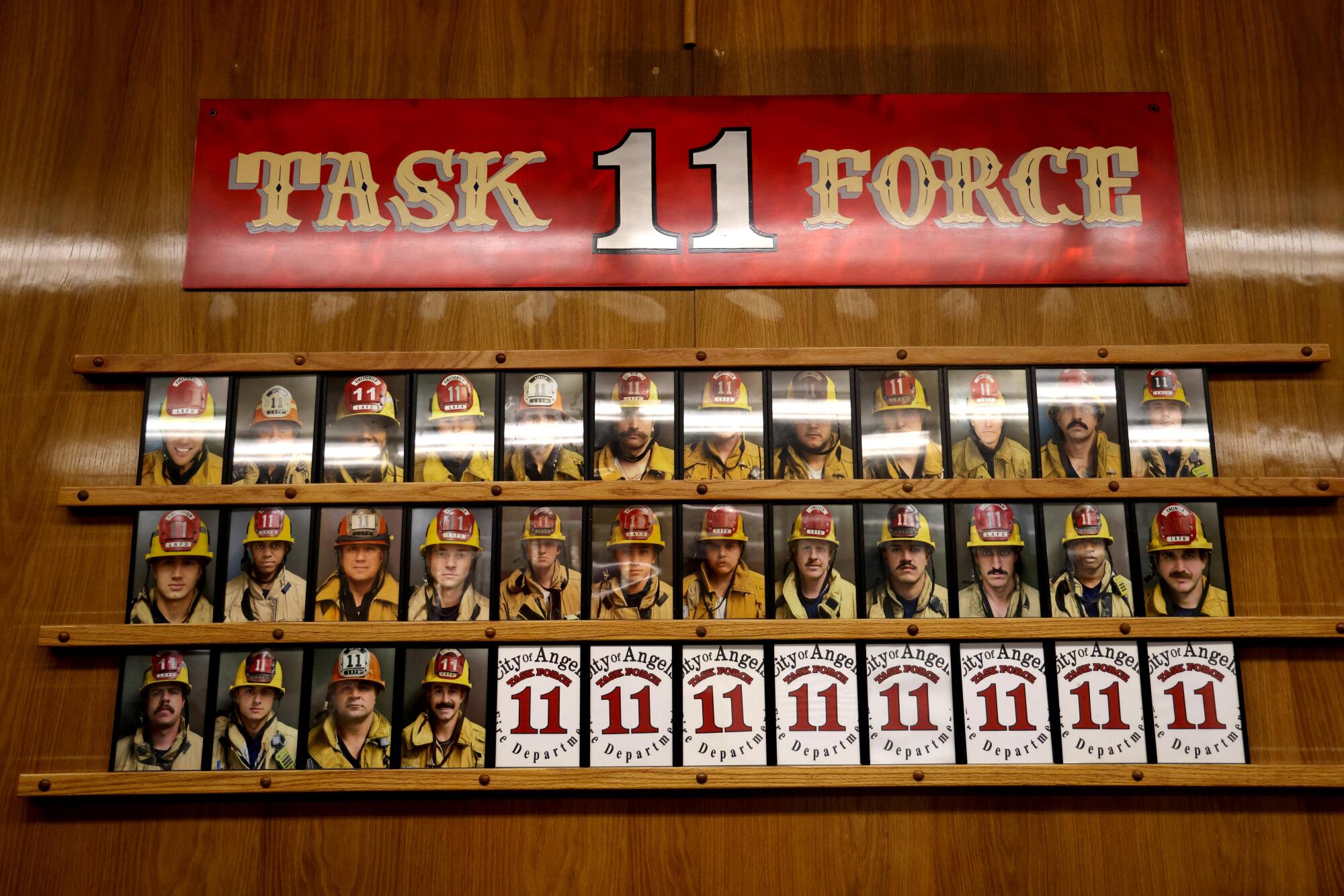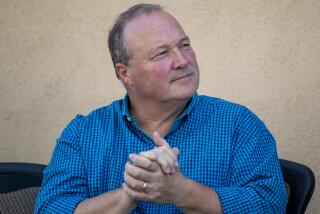
- Share via
If you spend much time in the Westlake neighborhood of Los Angeles, you will notice, amid the clamor of buses and trucks and car horns and vendors hawking their goods, a nearly steady symphony of sirens.
They scream day and night in rapid response to an endless run of emergencies, many of them in and around MacArthur Park. But it’s not usually a fire that LAFD Station 11 is responding to. Through August of this year, there have been 599 drug overdose calls, compared with 36 runs for structure fires.
“I’ve had three in one day, same person,” said firefighter/paramedic Madison Viray, who has worked at Station 11 for nine years.
California is about to be hit by an aging population wave, and Steve Lopez is riding it. His column focuses on the blessings and burdens of advancing age — and how some folks are challenging the stigma associated with older adults.
That’s just one measure of how bad the epidemic is in the low-income neighborhood where homelessness is rampant, drugs are sold and consumed in the open, 83 people died of overdoses in 2023, and merchants complain of gang threats and thefts by addicts.
In the middle of it all is Station 11, located on 7th Street two blocks from the park, with its trucks rolling out around the clock in every direction. Hanging on a wall inside the station is a proclamation from Councilwoman Eunisses Hernandez and her colleagues honoring the crew for being ranked by Firehouse Magazine as the busiest ladder company in the nation in 2022.
This year, Station 11 ranks just behind Station 9 in Skid Row (site of the city’s other major drug zone) for total runs, but it is on course to match last year’s total of 15,262 calls for fire and medical incidents (the majority of which do not involve overdoses).

While I was meeting with several members of the crew in Station 11 Wednesday afternoon, Viray and engineer Cody Eitner left abruptly to answer a call from an alley near 6th Street and Burlington Avenue. They returned a short time later to say they were too late to save the victim.
“Someone found him and called, but they’d been gone for too long and there was nothing we could do,” Eitner said.
The word on the street is that the drugs in the neighborhood are dirty. Cocaine might be spiked with fentanyl, and fentanyl might be spiked with the veterinary tranquilizer Xylazine, or “tranq” —all of which elevates the possibility of bad reactions.
It’s not uncommon to see people in the park with multiple festering ulcers on their arms and legs — one of the side-effects of tranq. Nor is it uncommon to see people bent in half, like twisted statues, because of muscle rigidity the firefighters refer to as the “Fentanyl fold.”

Battalion Chief Brian Franco, who first worked at Station 11 two decades ago as a firefighter, said, “we’ve seen a lot more fatalities from the overdoses than we did with heroin.”
And yet with fentanyl, the drug naloxone, if administered quickly enough, can reverse the effects of opiates and save lives. Sometimes it’s used by friends of the victim, or by a MacArthur Park overdose response team recently initiated by Councilmember Hernandez and the L.A. County Department of Public Health. Or by crews from Station 11.
“The vast majority of our [overdose] calls now are fentanyl,” said Capt. Adam VanGerpen, who serves as a public information officer but also goes on runs. “If we see that there are very shallow respirations … then we’re gonna open up their eyes and see if their pupils are pinpoint. Now we know it’s probably not … cardiac arrest or … respiratory arrest. Now we’re thinking, OK, this is an overdose.”
It can be easier to treat a fentanyl case than a PCP or meth overdose, VanGerpen said, because the latter two drugs can make a person agitated and combative. If it’s a fentanyl overdose, responders will administer the naloxone as a nasal spray (Narcan), inject it into a muscle, or pump it through an IV, depending on the situation.
“Anytime we’re successful, it’s satisfying,” said Capt. Adam Brandos. “In a station like this, where we run so many calls as we do, and it’s kind of a monotonous routine, those little wins are really good with the morale. But it’s not so satisfying to see the repeat. And we’re not changing the cycle at all. … It keeps repeating itself over and over again.”

Sometimes, Brandos said, a single response can trigger a cascade: “We may go on one call in the park where that call turns into four, because … of the other guy who’s over by the tree, and the other gal that’s over by the lake, and then the other person that’s over here. So that’s pretty normal.”
What is most striking about it all, Brandos said, is that these scenes play out so frequently they have become normalized.
When you first set eyes on the depths of social collapse and public distress, it’s shocking. But it’s all there again the next day, and the next, and although the shock endures, a bit of numbness takes hold, along with doubts that anyone in power is up to the task of restoring any semblance of order.
Anthony Temple, an emergency incident technician at Station 11, took me on a dark virtual tour of a typical day, beginning at the Westlake/MacArthur Park Metro Station, which has doubled in recent years as subterranean hall of horrors:

“People have overdosed ... on the subway platform while people are getting out of the train,” Temple said. “You’ve got people moving around this person, and we all come down there and do what we’ve got to do and take them to the hospital and leave. And you go back to the station and you get dispatched on another overdose where the person will be down, on the sidewalk, kind of like hanging into the street. …
“It’s just day in, day out, morning, noon, night, sidewalk, platform, staircase, park,” Temple said. “You know, it’s just like everywhere.”
Two members of the crew, Viray and Brandos, said they’ve brought their children to the neighborhood to show them where Dad works, and to show them a world they couldn’t have imagined.
And the reaction?
“Shocked,” Viray said of his 14-year-old son and 8-year-old daughter.

“I wanted to show them what some decision-making could look like,” said Brandos, whose girls are 9 and 11. “They wanted to know why everybody was leaning over on the sidewalk. ... I told them exactly what was going on.”
The crew told me they share a camaraderie that’s specific to the demands of Station 11. If you choose to work there, it’s because you like staying busy, you take pride in the number of runs, and you learn to accept that you didn’t create the crisis and can’t fix it. You can only respond to it, one call at a time.
Just before 6:30 p.m., a call came in. A middle-aged man was down at Alvarado Street and Wilshire Boulevard, across the street from the park, in possible cardiac arrest from an overdose. A truck and an ambulance rolled, lights flashing, sirens blaring. They were on the scene in less than three minutes.
The subject was down in front of Yoshinoya Japanese Kitchen, which is bordered by vendors selling electronics, clothing and toiletries. Some of them were closing down in the fading light of day, and people were still gathered behind the restaurant in an alley that serves as a drug bazaar. It’s a hellscape that has become part of the terrain, like the palm trees that rise over Alvarado Street and the street lamps that have gone dead.
One vendor went about his business as if he’d seen this scene play out so often he didn’t need to look again. Some passersby paused to check out the commotion, perhaps waiting to see if the unconscious man would make it. A boy of 10 or so moved in close enough to watch as three firefighters moved toward the man.
The air was rank with the day’s burned energy and wasted chances, and in the spot where I stood behind the ambulance, trash fanned out six feet into the street from the curb. A bag of chips. A Yoshinoya takeout bag. Coke cans. Empty food containers.
All of this is the normalized reality of a neighborhood that once stood as a gem of the city, and now suffers in wait for someone, anyone, to stand up and say this should not exist, cannot exist, and must end, for the sake of civility and for the benefit of the working people who make up the majority of the residents here, raising children who deserve better.

Firefighter/paramedic Luke Winfield put on a pair of white latex gloves and prepared a nalaxone IV, tied a blue tourniquet around the man’s upper arm and plunged the life-saving drug into the crease of his elbow.
After several seconds, the man jerked up as if on springs, back from the edge of death. He asked what had happened.
“You overdosed,” one of the firefighters said.
Still wobbly, he fell onto a vending cart and lay on his back, looking up at the reincarnated sky as it faded to pink. He was going to make it. This time. They loaded him into the ambulance for a ride to the hospital.
I asked Winfield how many times, in his two years at Station 11, he had done what he just did.
“Hundreds,” he said. “This hub is insane.”
More to Read
Sign up for Essential California
The most important California stories and recommendations in your inbox every morning.
You may occasionally receive promotional content from the Los Angeles Times.










